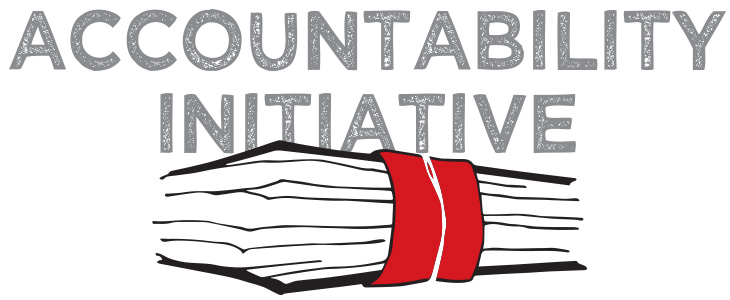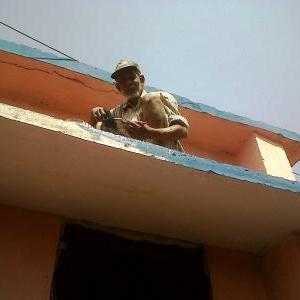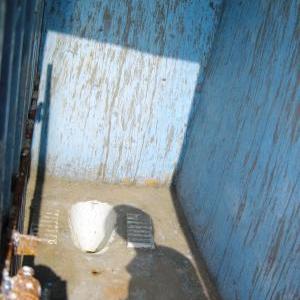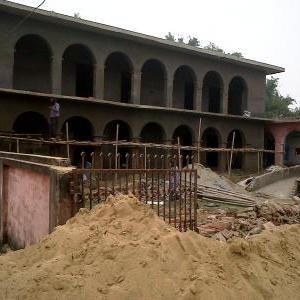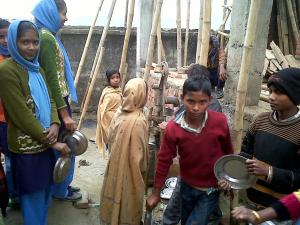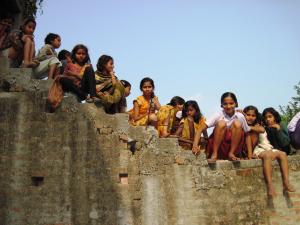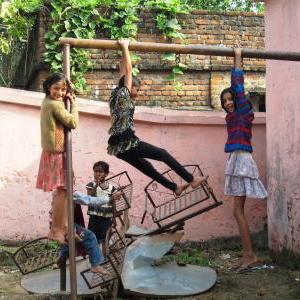Yamini Aiyar, Director, Accountability Initiative
India’s elementary education system is at a crossroads. In 2009, the Indian Parliament passed the Right to Education (RTE) Act guaranteeing the provision of free and compulsory education to all children between the ages of 6 to 14 years. At the heart of the law is a guarantee to ensure ‘age- appropriate mainstreaming’ for all children. In other words, the Act is a guarantee that every child in India acquires skills and knowledge appropriate to her age. Now, as efforts to deliver on this guarantee gain ground, the country faces an important choice: should elementary education be delivered through the current model that focuses on the expansion of schooling through a top- down, centralized delivery system? Or should we use the RTE as an opportunity to fundamentally alter the current system and create a bottom-up delivery model that builds on an understanding of children’s learning needs and privileges accountability for learning rather than schooling?
For decades, the primary goal of the Indian government’s elementary education policy has been to create a universal elementary education system by expanding schooling through inputs. Substantial finances have been provided to meet this goal. Between 2007-08 and 2009-10, India’s elementary education budget increased from Rs. 68709 to Rs. 97,255 crore in 2009-10.[2]
Most of this money has been used to build school-level inputs through a large education bureaucracy controlled and managed by the state and central government. To illustrate, PAISA analyzed the elementary education budgets (SSA and State budgets) of 7 states in the country for 2009-10 and 2010-11 to find that, on average, 78% of the education budget is invested in teachers and management costs. All critical teacher-related decision-making, for instance, hiring or salary payment, lies with the state administration.[3] Following teachers, the next largest investment is on the creation of school infrastructure: 14% of the budget. Funds for infrastructure development are often channeled to schools; however, key decisions related to sanctions and procurement are taken by the district. Importantly, while a school can demand infrastructure funds, it has no decision making power over the timing of receipt of these funds and de-facto funds have to be spent based on priorities set by the state and district administration. Interventions aimed directly at children, such as the provision of free textbooks and uniforms and addressing the problem of out of school children, account for just 6% of the total investment.
Interwoven in this top-down system is an intent to involve parents in decision-making. In 2001, the Government of India (GOI) launched the Sarva Shiksha Abhiyan ((SSA), now the programmatic vehicle for the delivery of the RTE) with a mandate that expenditure decisions be taken based on plans made at the school level through Village Education Committees (VEC). These plans are then aggregated at the district and state levels. Drawing on this model, the RTE mandates the creation of School Management Committees (SMCs) tasked with similar responsibilities. Despite this bottom-up planning structure, the centralized delivery system has disempowered these committees and in fact created disincentives for parental participation in a number of ways:
First, teachers, as pointed out already, are not accountable to SMCs.
Second, committees have spending powers over very little money. In 2010-11, committees had spending powers over just about 5% of SSA funds. Even these funds are expected to be spent based on norms set by GOI. So, if a school wants to spend more than the norm on, say, purchasing teacher material or if a school wants to invest more in improving children’s reading capabilities by dipping in to its maintenance fund – it can’t. Table 1 below offers an illustrative example from Hyderabad of the different activities over which an SMC can actually take decisions.
Table 1. Activities for which SMCs in Hyderabad city can take decisions
| Activity | Is SMC resolution sufficient? | Is any additional approval needed? | From whom? | How long will it take? | Who can do the procurement or appointment | What documents and other things will be needed? |
| Desks and Chairs | No | Yes | SSA planning | 2 months | SSA office | Approval of design; Three quotations from local suppliers |
| Sintex Water Tank | Yes | No | 2 weeks | SMC | Local purchase at PWD rates | |
| Roof Repair | No | Yes | SSA Civil/JE | 1 month | SMC+SSA | Approval of work and measurements;Materials bought locally as per PWD rates; vouchers of payments maintained |
| Ayah | Yes | No | 1 week | SMC | Interview notice with date and time |
Third, governance inefficiencies further curtail SMC powers. As PAISA has repeatedly pointed out, school grants rarely reach schools before October/November. These delays in fund flows mean that needs at the school often remain unmet owing to lack of money. More worryingly, PAISA found that in many districts, expenditures even for school grants are based on formal or informal orders received from district and block officials. Consequently, often monies are spent without adequate consideration to school needs.
In essence, SSA has promoted a bottom-up delivery system with no bottom-up control or decision-making power. The result is thus a de-facto centralized, top-down system.
To the extent that expansion of infrastructure has been the goal, this centralized investment model has been effective. Schools have been built, teachers have been hired and enrolment levels have reached near universal levels.[4] To be sure, the pace of this expansion has been variable across the country. Yet, even as lagging states work to fill this gap, the improved education infrastructure has thrown up the next great challenge: that of ensuring that children actually learn. Evidence thus far suggests that education infrastructure is yet to translate into children acquiring basic abilities in reading and arithmetic. The Annual Status of Education Report (ASER), has been tracking learning outcomes since 2005 to find that learning levels have remained almost stagnant over the years; just about half the country’s Standard 5 children can read a Standard 2 textbook and far fewer can do basic arithmetic. Arguably, therefore, this hierarchical centralized education system has been successful in creating education inputs and putting in place a system for schooling.
The challenge for India now lies in shifting its focus from schooling to learning. The first question in addressing this challenge is this: can this top-down delivery system enable the transition from schooling to learning?
This shift towards enhancing learning requires that the system focus on the needs of individual schools and children; or, to draw on GOI’s framework, it requires a system that recognizes ‘… the need for the creation of capacity within the education system and the school for addressing the diversified learning needs of different groups of children who are now in the school system.’[5]
Can this shift be achieved through a large centralized education bureaucracy? If not, what should this alternative model be? How do we align plans and financing systems to focus on learning? Can this be done through the traditional line-item budgeting system or does it require an alternative funding mechanism? Can the RTE-mandated School Management Committees (SMC) be the catalyst for this shift? If so, how best to channelize investments so that planning and financing capacities of SMCs can be strengthened? Crucially, how do we alter the decision making structure so that SMC’s exercise more powers than they currently do?
In many ways enabling the shift from schooling to learning offers us an opportunity to re-assess the current structures for governing elementary education finance and delivery. Understanding the status quo is the first step towards such a re-think. How are education resources allocated? How do their flow through the system to reach their destination? Who controls decisions on how resources are allocated and spent? What are the outputs and outcomes of this expenditure? PAISA is an effort at understanding and answering some of these very questions.
[1] Director, Accountability Initiative, Centre for Policy Research. This is a summary version of a longer introduction to the PAISA District Studies, 2011. For those interested, the study is available on the following link: www.accountabilityindia.in
[2] Kapur, A (2011). ‘Analysis of State Budgets: Elementary Education,’ Accountability Initiaitve, Budget Briefs series, www.accountabilityindia.in
[3] Some states like Bihar and Madhya Pradesh experimented with decentralizing the hiring process to local governments. Local governments were empowered to only hire contract teachers. However, even here all critical decision related to salaries and regularization remained with the administration.
[4] In 2009-10, the Government of India reported a net enrollment of 98.3%.
[5] Ministry of Human Resource Development (2011), ‘ Sarva ShIksha Abhiyan: Framework of Implementation’


